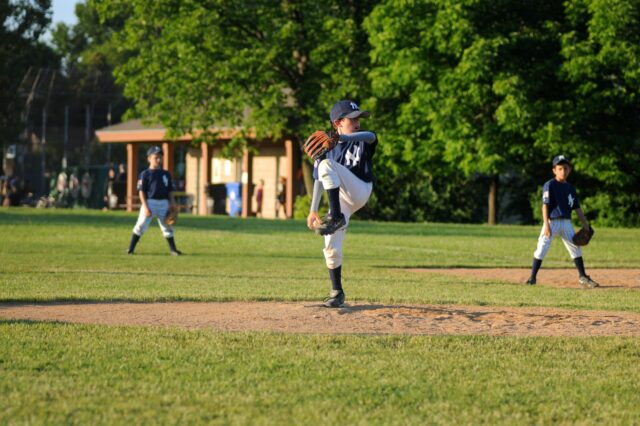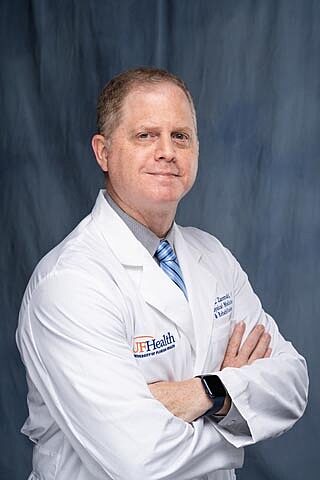UF Health researcher urges updated youth baseball guidelines to prevent pitching injuries

The director of the University of Florida Health Throwing Clinic is urging the nation’s youth baseball community to adopt stricter rules to prevent pitching overuse injuries that keep climbing.
The paper, published as an editorial in the Clinical Journal of Sport Medicine last month in collaboration with colleagues from Harvard and Emory universities, notes that sports medicine practices across the United States are reporting an increase in pitching injuries such as ulnar collateral ligament, or UCL, tears in the elbow.
“As you look at large-scale studies, it is clear the injury rates, particularly at the high school level and younger, are not decreasing,” said the paper’s lead author, Jason Zaremski, M.D., an associate professor in the UF College of Medicine’s department of physical medicine and rehabilitation. “So, there’s something we’re missing.”
One large sports medicine practice in Alabama, for example, saw UCL-reconstruction surgeries, often called Tommy John surgeries, rise from 30% to 50% of all youth and high school pitchers seen for an elbow injury between 2006 and 2020, according to research cited by the paper.
The authors of the editorial call for a reassessment of other potential risk factors in the face of existing guidelines that, while well-intentioned, are not working fully as designed.
Zaremski believes a major reason might be the quest for increased pitching velocity in the past decade, which puts more stress and torque on young arms, particularly the elbow.
“You can see it on the major league, collegiate and now high school levels,” he said. “You see professional baseball pitchers and some in college who are regularly throwing 100 miles per hour now. You never heard of that before except for maybe a few elite pitchers.”
The authors offer several recommendations:
- Enforce pitch counts for high school players in competitions and tournaments not subject to mandatory regulations by state high school associations, with coach and team penalties for noncompliance.
- Ease confusion about pitch count regulations by standardizing them state to state and in competitions not subject to state high school association rules.
- Players 14 and under who throw 25 or more pitches should not pitch in a game the next day.
- No pitching “off the mound,” as in practice, on consecutive days for players 14 and younger.
- State high school athletic associations should adopt a formalized four-week ramp-up period before season practice to allow players’ arms to strengthen.
- Weighted-ball throwing programs, in which players practice throwing heavier baseballs to increase velocity, should be avoided in pre-adolescent and adolescent athletes.
“Is this going to fix everything?” Zaremski said. “Of course not. These are just suggestions that we can hopefully use to mitigate the rate of overuse injuries.”
He said baseball throwing injuries should not be minimized. These aren’t players suffering just a little arm soreness. UCL tears can be devastating to a physically active adolescent. Reconstructive surgery for torn UCLs can sideline a player for a year.
Zaremski said he understands the competitiveness of the players and the caregivers who want to support their children in a game they love.
“Some of these arm injuries can take a player out for the season or longer,” he said. “And that’s a really big deal for a teenager.”
About the author

